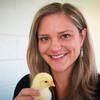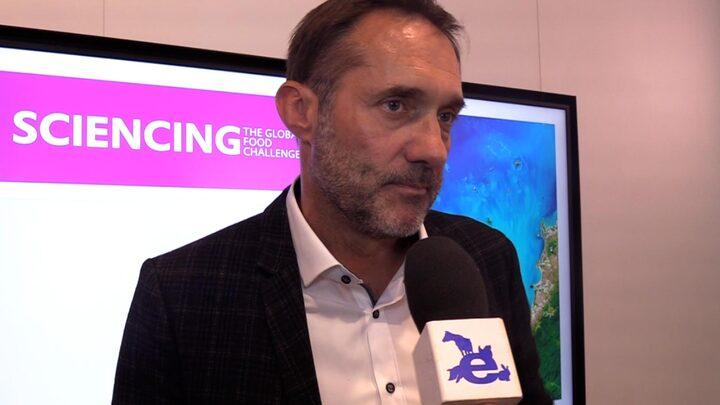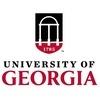Explore all the information on
Poultry management
Poultry management usually refers to the husbandry practices or production techniques that help to maximize the efficiency of production. Sound management practices are very essential to optimize production. Scientific poultry management aims at maximizing returns with minimum investment. A carefully controlled environment that avoids crowding, chilling, overheating, or frightening is almost universal in poultry farming. Cannibalism, which expresses itself as toe picking, feather picking, and tail picking, is controlled by debeaking at one day of age and by other management practices. The feeding, watering, egg gathering, and cleaning operations are highly mechanized. Birds are usually housed in wire cages with two or three animals per cage, depending on the species and breed, and three or four tiers of cages superposed to save space. Cages for egg-laying birds have been found to increase production, lower mortality, reduce cannibalism, lower feeding requirements, reduce diseases and parasites, improve culling, and reduce both space and labour requirements.
Mohammad Afrouziyeh (University of Alberta / Poultry Innovation Partnership) shares his recommendations and insights on water quality, as well as a new tool to control it, during this Engormix interview....
Comments : 3
Recommendations: 7
Most people are very familiar with the severe consequences that heat stress can have on poultry (see our previous newsletter), but cold stress can have severe production and economic consequences as well, leading to reduced egg production, reduced survivability, suppressed development and...
Comments : 0
Recommendations: 1
Vinicius Chiappetta, Global Commercial Director for Livestock Nutrition and Farm Management at Cargill, talks about the concept of Precision Farming, its benefits, possible obstacles, and how can it be monitored efficiently. He will speak on this subject at the Animal AgTech Innovation Summit in Amsterdam on October 12th....
Comments : 4
Recommendations: 3
John Boney (Penn State University) speaks on the technology outlook for the poultry industry and the increasing impact of automation, during this Engormix interview....
Comments : 0
Recommendations: 0
Introduction Feed ingredients and manufacturing are expensive components of integrated poultry production, sometimes reaching 70% of total operational costs. Fortunately, the added costs of manufacturing poultry feed improve feed efficiency and poultry performance. The performance benefits from feeding pelleted diets results in a positive return on investment, making it a common practice in broiler and turkey production. Improving the quality of pellets further enhances poultry...
Comments : 1
Recommendations: 3
Important data:
Cobb Chicken: 500
Weight at birth: 42 gr
Weight at 25 days: 2000 gr
Average daily weight gain: 78.32 gr
Dr. Jovanir Inés Muller Fernandes, associate professor at the UFPR Palotina...
Comments : 9
Recommendations: 1


Mycotoxin Testing in the Feed Chain: A Risk Prevention Strategy for Raw Material Suppliers, Grain Storage Facilities and Processors, and Feed Manufacturers
Suggested link
Genetic progress in laying hens has never been so clearly visible in the field throughout the past decades. Modern selection methods, such as genomics and fully automated measurements, as well as massive investment in the expansion of our R&D programme have...
Comments : 4
Recommendations: 2
The Poultry Extension Collaborative has finalized the program for the 3rd annual PEC symposium, which will be a virtual event.
Theme: Breeder flock welfare.
Date: May 16th, 2023.
You can register for free here .
...
Comments : 0
Recommendations: 1
Introduction Nepal’s poultry industry has seen a significant and rapid growth in the last decade, contributing more than 4% to the national gross domestic product (GDP) [1,2]. Majority of the poultry products are supplied by numerous commercial farms (54% of total poultry production) scattered throughout the country. Backyard poultry also accounts for significant proportion of the total poultry production (46%); poultry meat and eggs are an easy source for protein and...
Comments : 0
Recommendations: 1
Piling is an abnormal behavior commonly observed in commercial laying hen flocks. Piling occurs when birds crowd together, usually on top of one another, in a densely packed manner. A piling event may or may not end in smothering. Smothering occurs when one or more birds die due to suffocation from piling. Piling and...
Comments : 1
Recommendations: 0
Human-animal interaction is the mutual and dynamic relationship between a human and an animal where the animal perceives human interaction as degree of relatedness or distance and vice-versa. Human beings have domesticated poultry species for eggs and meat production. Domestication has favored tameness in animals, however,...
Comments : 0
Recommendations: 0
In many parts of India, summer is severe with maximum day temperature hovering around 40 C (ie 104 F). There is also shortage of water in summer and since water table goes down, bacterial count in water is high. It is therefore a challenging task to manage poultry in these conditions. During summer, weight gain, FCR, egg production, eggshell quality and hatchability are all adversely affected and mortality is high. Disease incidence is also more because of...
Comments : 12
Recommendations: 3
.jpg&w=3840&q=75)

On cherche des distributeurs dans plusieurs pays d’Afrique comme le Kenya, l’Ethiopie, la Tanzanie, le Congo, etc
Suggested link
Mike Czarick (University of Georgia) explains how this application can help you assess the tightness conditions of your poultry house, in this interview during IPPE 2023 in Atlanta, USA....
Comments : 1
Recommendations: 0
Brian Fairchild (University of Georgia) talks about common misconceptions regarding this system, possible overuse and its impact on litter conditions and poultry welfare, in this interview during IPPE 2023 in Atlanta, USA....
Comments : 1
Recommendations: 0
American and European companies are pledging to move to include slow-growing broiler chickens for production, which means they will use broiler chickens with less efficient growth rates in their production systems. Slow-growing strains show improved welfare outcomes compared to conventional ones. This newsletter...
Comments : 1
Recommendations: 0
by Sam Shafer
Is it safer to catch chickens by two legs or one? Poultry scientists show how tweaking catching and transport methods can reduce injuries.
In a recent study, poultry scientists investigated the best way for manually catching chickens in a production setting. The two main ways for manually catching a chicken are the one-legged catch and the two-legged catch. The researchers examined chickens after catching to see...
Comments : 0
Recommendations: 0
by Sam Shafer
A new study of elevated plastic platforms vs. wooden planks suggests turkeys can balance better on the platforms and prefer platforms overall
Poultry scientists work to make sure animal housing is safe—and they research how housing updates might benefit bird health and welfare. For researchers in Switzerland, one important question is whether fattening turkeys (raised for their meat) might benefit from...
Comments : 0
Recommendations: 0
Conventional broiler (meat) chickens reach a final weight of 6.6 lbs (3 kg) in approximately 40-44 days. Across their lifetime, these fast-growing birds gain an average of 68-75 g per day, with daily gain increasing with age (Aviagen, 2022; Cobb, 2022). With their fast growth, however, they...
Comments : 0
Recommendations: 0
Interest in plastic evaporative cooling pads has been steadily increasing since their introduction approximately ten years ago, especially for producers with water quality issues. Though for the most part six-inch plastic pads are interchangeable with six-inch paper pads, and can produce similar cooling, this doesn’t mean there are not significant differences between plastic and paper pads. Not taking into account these potentially important differences can result in an increased...
Comments : 1
Recommendations: 1



















.jpg&w=3840&q=75)








